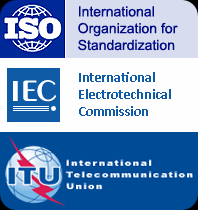JPEG XR is Now an International Standard
 I’m very excited to share the news that JPEG XR is now an approved ISO/IEC International standard. (It’s official designation is ISO/IEC 29199-2.) In addition, JPEG XR has also been approved as ITU Recommendation T.832. You can find more information in the press release from the JPEG Committee.
I’m very excited to share the news that JPEG XR is now an approved ISO/IEC International standard. (It’s official designation is ISO/IEC 29199-2.) In addition, JPEG XR has also been approved as ITU Recommendation T.832. You can find more information in the press release from the JPEG Committee.
As I’ve discussed in previous blog posts here, JPEG XR is the standardized incarnation of HD Photo, an innovative new format for digital photos developed at Microsoft, and first shipped in Windows Vista. There are a few minor differences between HD Photo and JPEG XR; these changes were the result of some excellent work by the JPEG Committee that helped insure the highest possible quality for the approved standard.
JPEG XR offers some dramatic benefits when compared to the original JPEG file format that we all know and love:
- Better compression – JPEG XR offers improved efficiency compared to JPEG, and the type of compression artifacts are often less objectionable than the typical JPEG compression artifacts. JPEG XR offers a very wide range of compression levels, including perceptively lossless or mathematically lossless compression. Regardless of your requirements, JPEG XR probably offers a compression option that’s ideal for that scenario.
- More image formats – JPEG XR supports 8bpc (bits per channel), 16bpc and 32bpc, as well as several special bit depth formats. Pixel values can be stored as either integers, scaled fixed point numbers or full floating point values; this provides full support for numerous high dynamic range (HDR) imaging scenarios, as well as support for wide gamut color spaces. In addition to 3-channel RGB, JPEG XR supports monochrome, CMYK and n-channel formats up to 16 independent channels. many of these formats also support an alpha channel. This wide range of image formats allows for dramatically better image quality and allows this single new file format to effectively replace many previous formats that were required for specific scenarios.
- Advanced decoding features – JPEG XR provides progressive decoding, allowing lower resolution previews or specific cropped areas to be displayed without the need to decode the entire image. Additionally, JPEG XR images can be cropped, rotated, flipped and resized (within certain constraints) without ever needing to decode and then re-encode the image. That means these operations are much, much faster and no additional image quality is lost due to the additional encoding steps.
The many innovations delivered in JPEG XR originated from over ten years of research and development at Microsoft. And through our participation as a member of the JPEG Committee, we’ve been able to deliver additional improvements and create an International standard available to everyone.
So the next question everyone asks is “when will it be available in a camera?” Since I don’t work for a camera company, I can’t answer that question. But I’m pleased and proud that because JPEG XR is now a free International standard, there’s very little standing in the way of making that happen!
(Updated 7/30/09 to correct the IEC logo.)
Comments
- Anonymous
July 30, 2009
Wow! At Last! It is officially called JPEG XR! That's one of the better news to hear. Currently, a good portion of my image archive (scans, snapshots, screenshots, artworks, etc.) is in JPEG XR format and now they are STANDARD!So, I wonder what's going to happen next. Basically, how software are going to support this standard? What about Microsoft products? Are we going to be able to share our JPEG XR on the Internet or send photo mails without having to convert our JPEG XR snapshots? Is Internet Explorer going to support JPEG XR in its <img> tags?Or... JPEG 2000 is a standard too, right? But it's so obscure... I hope history won't repeat itself. - Anonymous
August 08, 2009
I notice that JPEG XR/HD Photo is still not listed on the Open Specification Promise website, and the reference implementation is still not compatible with most open source licenses.Considering that every major browser other than IE and Opera are open source, this seems to me to be a major adoption blocker.But then again, IE still doesn't support it either. Maybe just avoiding the embarrassment of having a 3rd party product implementing it first! :=PThanks! - Anonymous
February 11, 2010
Any updates on that?Will we see it in new Cameras, Photo Editing Tools etc?Thanks. - Anonymous
September 26, 2010
Hello Bill,I've found your introduction to jpeg xr very interesting, and would like to look forward to seeing more adoption of the standard. I do have one question though. So currently I find MS WIC solution to be only (relatively) widely available encoding solution for jpeg xr. Can you explain in plain words how to relate quality constant when converting jpeg xr to say that of normal jpeg, or at least give a brief guideline as to which number you consider perceivably fine/mediocre/poor for normal photo(/documents) uses? There isn't much explanation and too few articles concerning this on the internet. Any help would be appreciated.Thanks. - Anonymous
November 07, 2010
When might we see point & shoot digital cameras with JPEG XR support? - Anonymous
November 24, 2010
Very interesting format...... is there any way I could test it somehow?I'm currently using OpenEXR + Jpeg2000 and it looks like jpeg XR might fill a big gap.Go go go!! - Anonymous
August 26, 2011
Actually, the real image visual quality of JPEG XR is NOT so good as claimed by Microsoft themselves. JPEG2000 is better than JPEG XR as well as Google WebP. Another image compression technique called Lucid seems work better than them, look at www.qualvisual.net for some comparison results. Quite interesting. - Anonymous
January 02, 2014
The comment has been removed